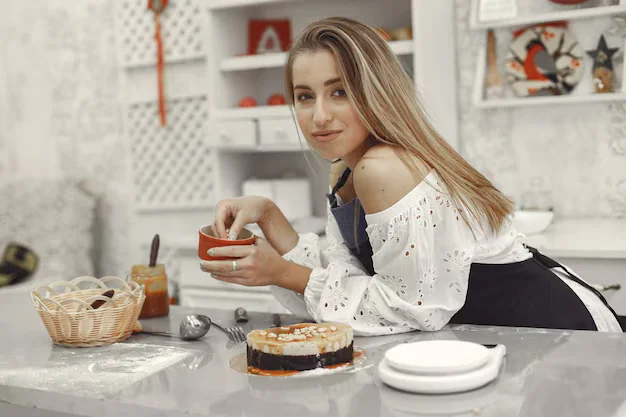Desserts aren’t just about satisfying a sweet tooth—they’re an experience. The right combination of distinct flavors, textures, and ingredients can turn a simple recipe into something unforgettable. But if your homemade treats aren’t turning out quite as magical as you’d hoped, don’t worry. The difference between a decent dessert and one that has people asking for seconds often comes down to a few key techniques.
So, what can you do to take your dessert game to the next level? Let’s dive into some sweet tips that will help you create rich, flavorful, and perfectly balanced delights every time.
Nuts for Desserts: Why You Should Be Adding More Crunch
The best desserts don’t just taste good—they keep things interesting with texture. That’s where nuts come in. They add crunch, depth, and a hint of natural sweetness that complements everything from cookies to custards. If you’re only using nuts as a topping, you’re missing out on their full potential.
One of the most underrated ways to upgrade desserts is by incorporating pistachios. Their mild, slightly sweet flavor pairs beautifully with everything from rich chocolate cakes to delicate pastries. Even better, they’re packed with nutrients, making your treats feel just a little more guilt-free. The benefits of eating pistachio go beyond their taste—these little green gems bring protein, fiber, and a satisfying crunch that can take a dessert from good to great. Whether finely ground into a buttery crust, folded into dough, or sprinkled on top of a creamy mousse, pistachios (and other nuts) give homemade sweets a gourmet touch.
The Secret to Better Chocolate Desserts? Variety
If you’ve ever been disappointed by a chocolate dessert that tasted one-dimensional, chances are the recipe only used one kind of chocolate. While cocoa is always a good idea, mixing different types of chocolate creates depth and complexity in a way that a single variety just can’t match.
One of the best ways to layer flavor in chocolate-based desserts is by incorporating something distinct, like toffee chocolate, for example. The combination of rich cocoa and buttery caramelized sugar adds a contrast that makes every bite more interesting. Dark chocolate brings intensity, milk chocolate adds smoothness, and toffee chocolate introduces a crisp, slightly burnt sweetness that balances the richness. Whether you’re making brownies, truffles, or a decadent chocolate tart, using multiple kinds of chocolate ensures that no two bites taste exactly the same—in the best way possible.
Mastering the Art of Sweet and Salty
One of the biggest mistakes people make when baking is forgetting about balance. Sugar is important, but adding a touch of salt is what brings out the best in your flavors. Salt doesn’t just cut through sweetness—it enhances everything from chocolate to caramel to fruit.
A pinch of sea salt in cookie dough can transform a regular chocolate chip cookie into something that tastes professionally made. Salted caramel is a classic for a reason—it creates contrast and makes the sweetness more pronounced. Even fresh fruit-based desserts benefit from a little salt to bring out their natural flavors.
Fresh Ingredients
It’s easy to assume that since dessert is all about indulgence, ingredient quality doesn’t matter as much. But using fresh, high-quality ingredients is what separates a bakery-level treat from something that tastes flat and uninspired.
Fresh dairy makes a massive difference. Real butter instead of margarine, high-fat cream instead of a lower-quality substitute—these choices impact texture and flavor in ways you can’t ignore. The same goes for eggs. Farm-fresh eggs give custards and cakes a richer taste and more vibrant color.
When it comes to fruit-based desserts, using in-season produce makes all the difference. Fresh, ripe berries will always beat frozen ones in terms of flavor, and a peach cobbler made with peak-season fruit is a completely different experience than one made with canned peaches.
Texture is Everything
If a dessert tastes great but feels boring in your mouth, it’s missing something. Great desserts aren’t just about flavor—they’re about contrast. The best ones combine different textures to create a more exciting eating experience.
Think about a perfect crème brûlée. The smooth, creamy custard is delicious on its own, but it’s the crisp, caramelized sugar topping that makes it unforgettable. A great cake isn’t just soft—it has a balance of fluffy interior and a slightly crisp edge. Even something as simple as a sundae is better when it combines silky ice cream, crunchy nuts, and a drizzle of thick, gooey sauce.
To make your desserts stand out, think about how you can add contrast. Add crispy elements to creamy desserts, chewy bits to crunchy cookies, or a hint of smooth ganache to a rough, crumbly tart crust. Playing with texture keeps desserts from being predictable, which means they’ll always feel exciting to eat.







